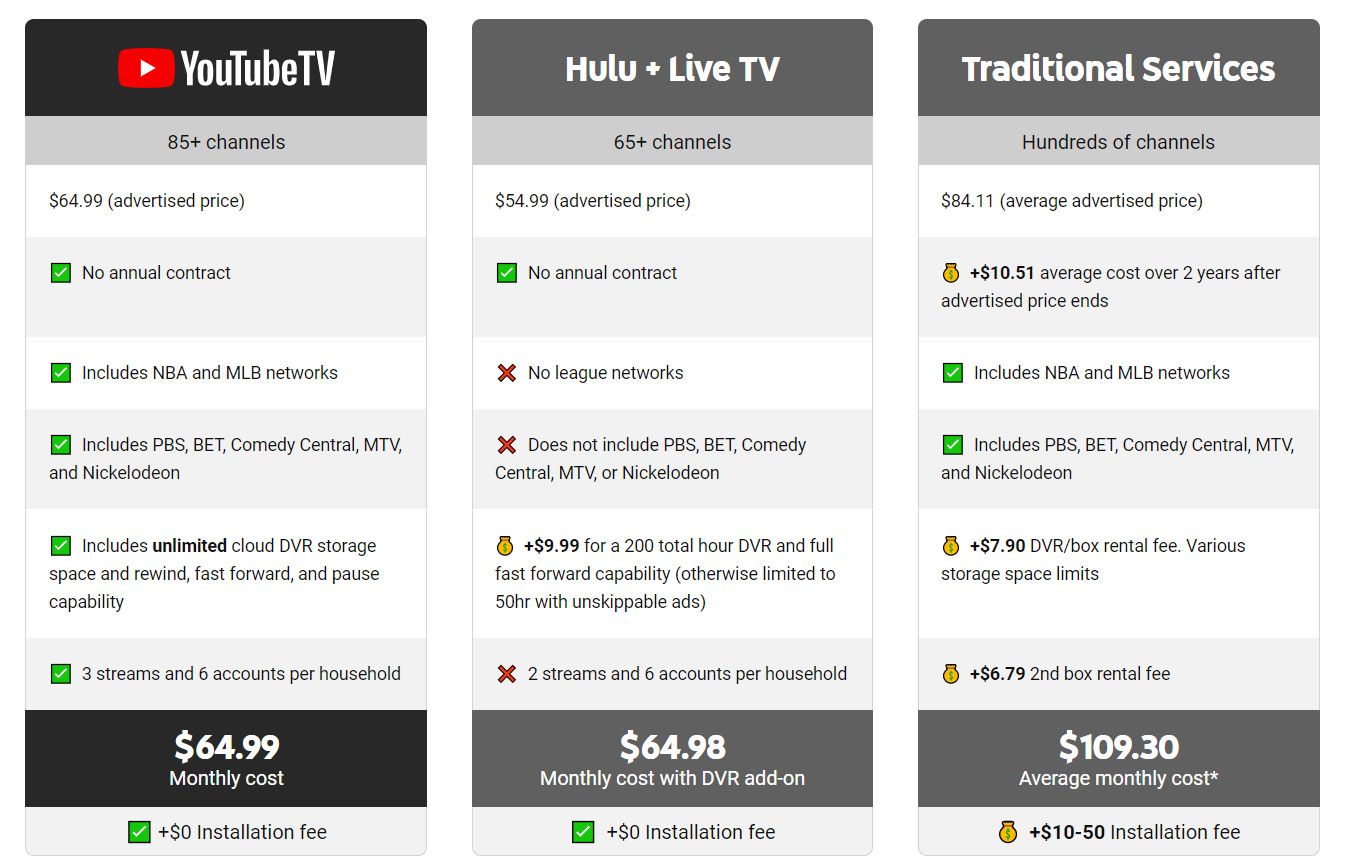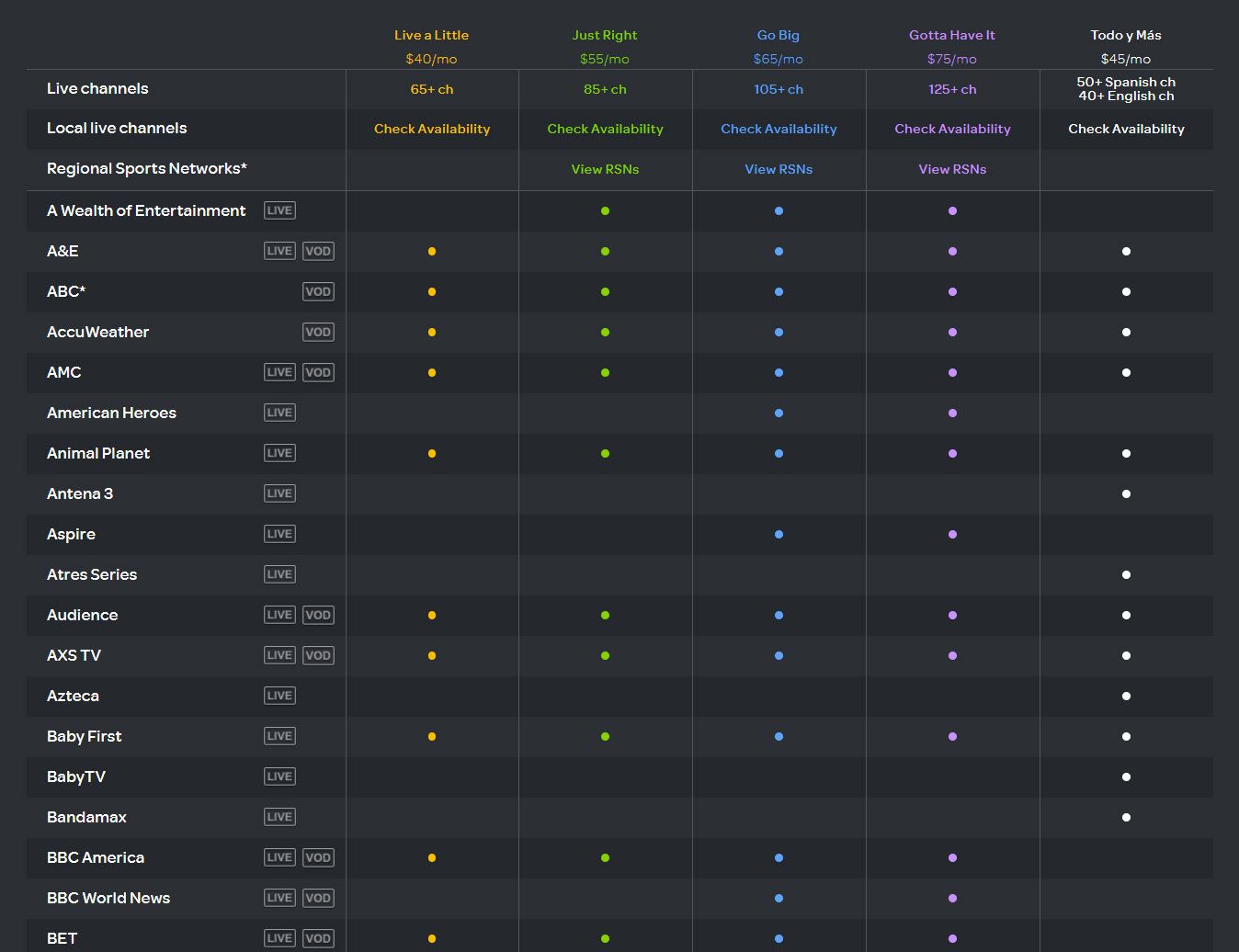Play it again, Sam: this week Google announced that YouTube TV is receiving yet another price hike. It was met with resounding boos, despite the expanded Viacom channel lineup, as is always the case when these formerly value-focused live TV services suddenly lose a lot of value. Why can't we just pay for the channels we want?
"Give me the garbage that I want to watch, and that I want to pay for," cried Florence Ion on the All About Android podcast, "there's a lot of other real garbage on there that I don't want to pay for!" It's something TV watchers have hoped to see for decades. Long before the current crop of "cord-cutting" internet TV services, cable and satellite customers were begging for the option to pay for channels one at a time. It never happened. In fact, part of the push towards cheaper internet TV was the dissatisfaction with that expensive lack of options.
But now these cheaper services are consistently climbing in price. YouTube TV is now almost double what it cost per month when it launched in 2017. Hulu, Sling TV, DirecTV Now, FuboTV---they've all hiked up prices at remarkably regular intervals. Suddenly, the dream of cheap contract-free access to the live TV we want is costing a whole lot more, and it's starting to resemble the old cable and satellite packages we escaped to get here.
YouTube TV tries to justify its higher price with intangibles.
When are we getting the real a-la-carte TV experience? When can we pay for just what we watch, nothing more and nothing less? We're sorry to be the bearer of bad news here, but the answer is "probably never."
That's Not How TV Works
Let's take YouTube TV as an example. The price is increasing from $50 a month to $65 a month in August, justified (according to Google) by a bevy of new channels from the Viacom media empire. Here are the new channels, some coming sooner than others:
- BET
- CMT
- Comedy Central
- MTV
- Nickelodeon
- Paramount Network
- TV Land
- VH1
- BET Her
- MTV2
- Nick Jr.
- NickToons
- TeenNick
- MTV Classic
What if you want only the music channels, CMT, MTV, MTV 2, VH1, and MTV Classic? What if you' only want the Nickelodeon channels for your kids? Well go pound sand, you're paying the same $15 hike as everyone else.
Why? Because Viacom-CBS is selling all of these channels to YouTube TV in one negotiated package. YouTube might care which channels you want, but Viacom definitely doesn't---it wants to get paid for every one of its channels, by every one of YouTube's customers. The only way for that to happen is if everyone gets all the channels and everyone pays the full price.
It was always thus when it comes to paid TV---online, cable, or satellite. While cable companies do offer packages with a few more options in terms of price (as do a few modern services, like DirecTV NOW and SlingTV), the channels that specific groups of people are probably going to want get split up among them, so most people end up paying for more expensive packages. And, along with it, paying for tons of channels they never watch and would never even consider watching.
DirecTV NOW still clings to the package model ... without offering much in terms of actual choice.
The relationship that the owners of these channels (Viacom-CBS, Comcast-NBC-Universal, WarnerMedia-Turner, Disney-Fox ... the list is getting shorter all the time) and the platforms the channels go out on is sort of like the one between drivers and car insurance companies. For the insurance to make sense, every driver has to pay a little bit all the time, so that when one person has a catastrophic accident the pool of money can support their needs. For TV content, everyone is paying for all the channels all the time. That means that smaller channels that wouldn't be able to afford to make content on their own, and based on their smaller audience, can still exist.
But the metaphor breaks down quickly. Insurance companies, frustrating and scummy as they often are, provide an essential service. Content companies like Viacom are merely leveraging this old-fashioned bundling system to get as much money as possible out of platforms and customers. The ability to spread show production out across dozens of smaller channels is a tiny carrot next to an enormous stick.
Where's the Leverage?
So, why don't platforms like YouTube and Hulu fight back? Part of it is that they're sometimes the exact same companies. Disney and Comcast/NBC own big chunks of Hulu and its live TV service, WarnerMedia and DirecTV are both under the AT&T umbrella. Those corporations are shaking their own hands. But there's a deeper issue here: platforms die without content, and that gives the companies that own the content all of the leverage.
If YouTube TV or Hulu + Live TV want those channels---and sometimes if they want to keep the channels they currently provide---they don't have another choice but to pay up. And, that means their users pay up, too, or the platform becomes unprofitable. It's a delicate balance: with this week's price hike, someone at Google had to decide how much to increase the price. Too little, and the service doesn't bring in enough money to afford to pay for that new content. Too much, and the service starts losing subscribers ... and soon can't afford that content anyway.
This paragraph negates everything you've been building up toOdds are pretty good that someone out there wants to sell you a-la-carte TV, just as much as you want to buy it. But that someone doesn't work at Disney, Comcast, or AT&T. Those folks are just fine with the status quo and have been for decades, ahthankyouverymuch.
What Can You Do About It?
Not a whole lot, unfortunately. A few internet TV services do offer different packages (Sling TV, DirecTV NOW), but they're split up along the old lines, strategically chosen to make as many people pay for more expensive packages as possible. YouTube TV has indicated that it might offer tiered packages in the future, but those would likely fall into the same trap.
Our advice is the same as it's been for a while: if you want to save money, try an over-the-air antenna. Local channels aren't much compared to the variety of a paid service, but you can't beat free. If you want to get creative, you can roll your own DVR with hardware like HDHomeRun or some Roku-powered TVs---again, no monthly charge. You can then augment the OTA content with cheaper services like Netflix, Hulu (sans Live TV), or HBO Max to add big chunks of streaming content.
The sad truth is that streaming services aren't going to stop hiking up their prices until they see subscribers fleeing. And it looks like those prices will be a lot closer to the old cable packages we ran away from in the first place.



